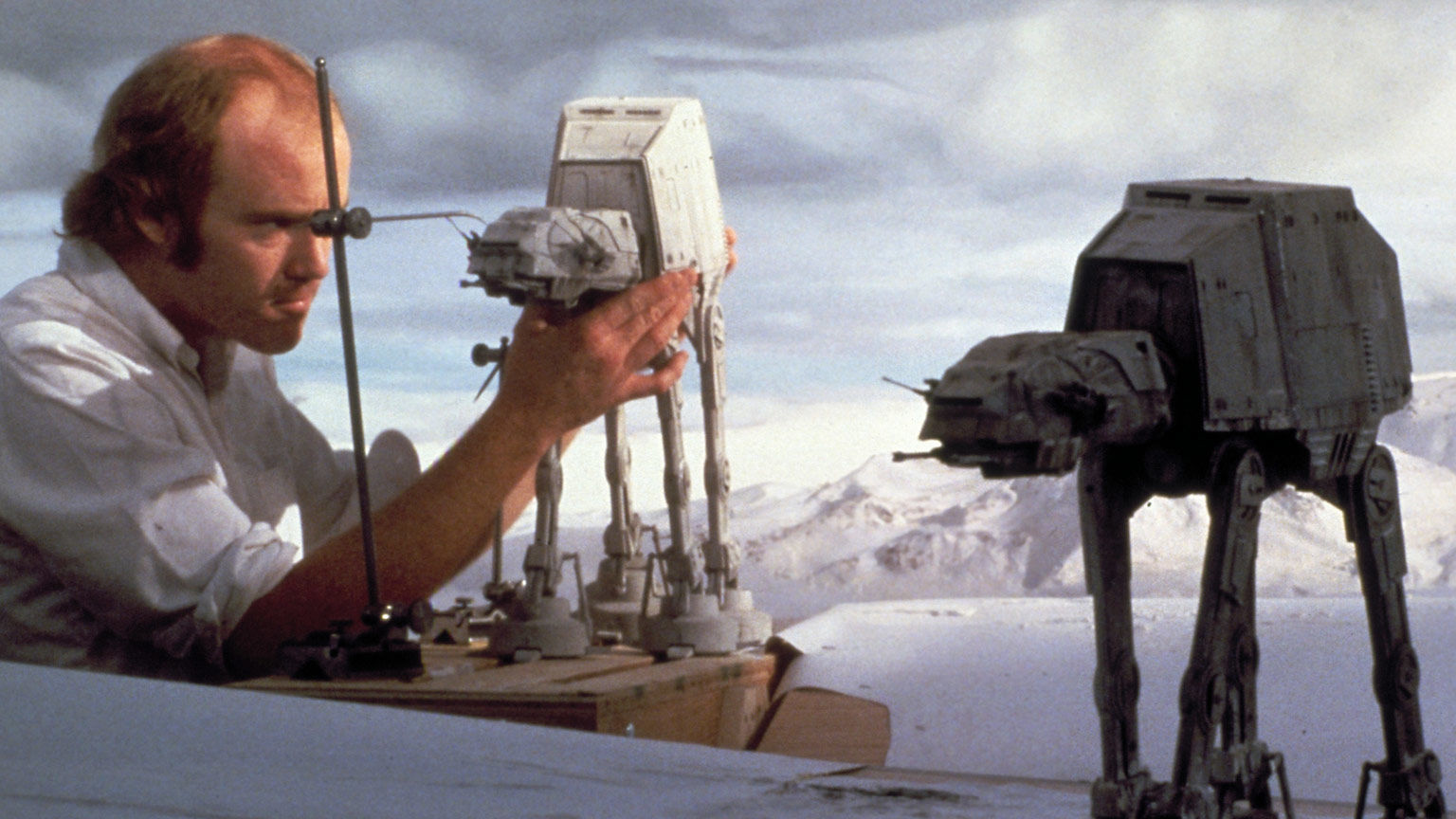Create a free profile to get unlimited access to exclusive videos, sweepstakes, and more!
'Go for the legs': A short history of how ILM made Empire's AT-ATs look so damn real

After Luke Skywalker and Han Solo got their medals for blowing up the Death Star, fans waited three years for the next installment in the Star Wars franchise, and their patience was rewarded with the instantly iconic Battle of Hoth. Here, Rebel soldiers went to war against towering Imperial Walkers on an alien tundra. No CG, obviously — just old-fashioned practical visual effects and stop-motion animation that, four decades later, holds up better than most modern digital effects.
In honor of Star Wars: The Empire Strikes Back's 40th anniversary, let’s revisit how Industrial Light & Magic pulled off one of the greatest moments in all of science fiction: Bringing AT-ATs to life.
"Sometimes we'd get a shot a day, if we were doing real good,” effects artist Dennis Murren revealed in a recent behind-the-scenes video on StarWars.com. The complicated shoot required Murren and his team to use both tried-and-true VFX methods and invent a few of their own.
The video, narrated by Murren, shows time-lapse footage of ILM animators adjusting large AT-AT models frame-by-frame. Phil Tippett, one of ILM’s most notable and prolific artists, ran point on using stop-motion animation on the AT-ATs. But before the production settled on that technique, they considered building and executing a 5-foot-tall model with robotic articulation points that could actually move on its own.
Unfortunately, they scrapped that idea due to budgetary reasons, and the complexity required to pull it off in time for release. (It should be noted that prep for the sequence began in late 1977, as the newly-released A New Hope was still being celebrated by both Hollywood and fans.) Instead, the production employed talented crews to animate large models frame-by-frame. This time-consuming and painstaking process occasionally had animators wishing they’d gone with the robot option, especially when animators on set encountered issues when it came to physically getting their hands around the model to manipulate it.
According to StarWars.com, the Empire’s number one cause of death for Rebel snow speeders was originally pitched to be a tank vehicle. However, then-effects artist Joe Johnson came up with the final design after being inspired by both GE’s Walking Truck — a four-legged, robot concept toy — and concept art created by the late futurist Syd Mead. Johnston, who would also help design Boba Fett for Star Wars: Return of the Jedi, mixed his ideas with those of George Lucas, who was inspired in part by the tripods that wreak havoc in H.G. Wells' The War of the Worlds.
The snowy set the AT-ATs called home proved somewhat easier to create. First off, that’s not snow — it’s baking soda. To use anything else would have proven problematic under the hot studio lights. Intricate matte paintings depicting Hoth’s cold blue skies — along with the rotoscoping in of live-action elements from on location in Norway and on Elstree Studios’ England-based soundstages — helped further sell the illusion of the Rebels engaging Imperial troopers in a WWII-level onslaught.
Johnston, Murren, and Tippett are the sequence’s key architects and true heroes. Shooting models for the tauntauns, vehicles, and characters against painted backgrounds saved the production valuable time and provided it with techniques that future films in the series would use to bring their spectacles to the big screen. Their ingenuity not only helped pull off an all-timer of a set-piece, but also changed the way similar blockbusters were made.
Despite the tricks of the trade used to re-create a snowy landscape that didn’t require real snow, the team’s use of substitutions for the real thing was vital to their mandate to invest the sequence with its verisimilitude. Murren says the staccato motion of the AT-ATs was intentional, as it approximates how such a massive armored vehicle would move in the middle of such an epic battle. This level of detail, coupled with the film’s devotion to making that galaxy far, far away feel real, is largely why the sequence still resonates for fans.
If it’s your millionth time rewatching it, you still do so with child-like awe. If it’s your first, then you may find yourself asking why no modern Star Wars movie, with all the costly CG tools at their disposal, has yet to come close to pulling off a scene like this.
Hoth’s wintery battle was as much of a struggle on the real stage as it was for the fictional characters fighting it. And that’s part of its charm, its legacy — one we will be studying and celebrating for at least another 40 years.


























